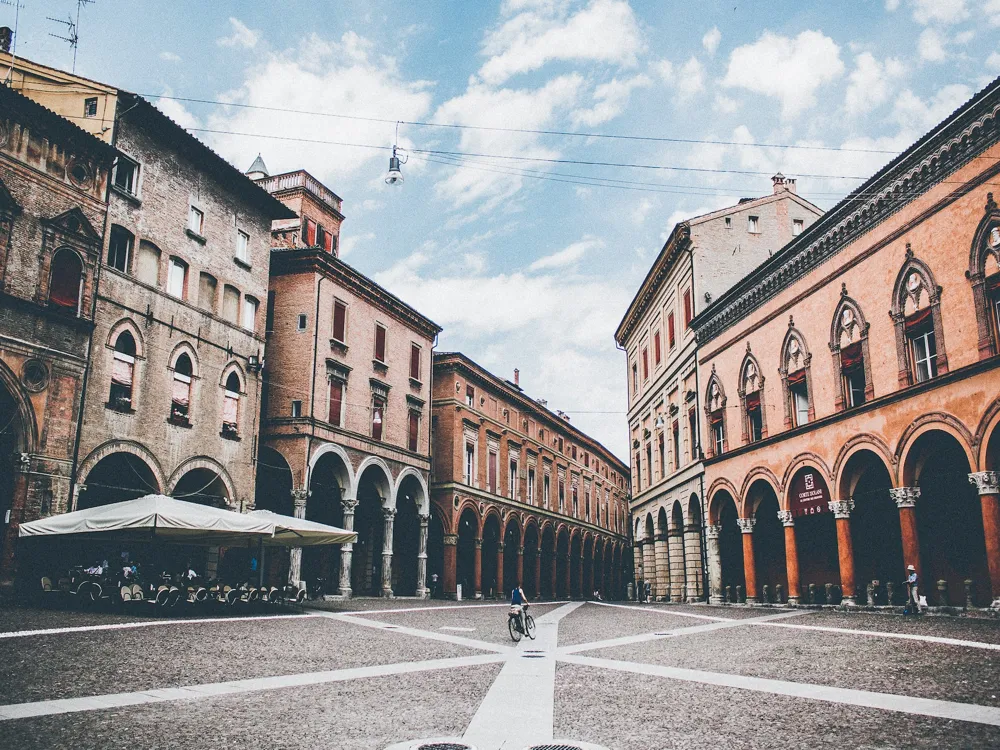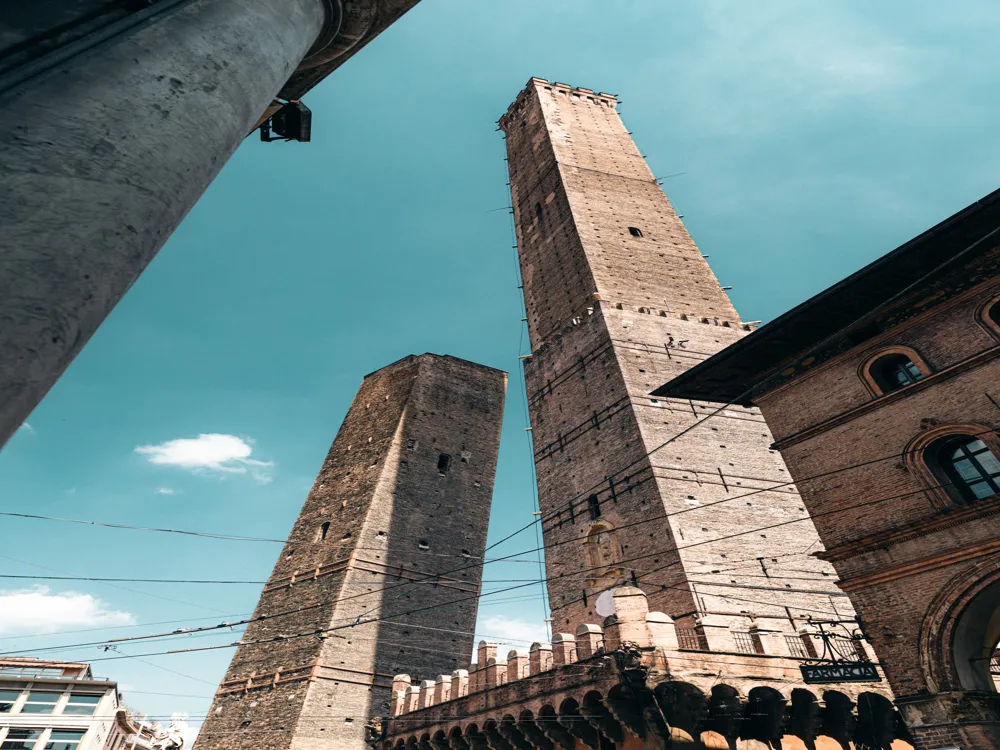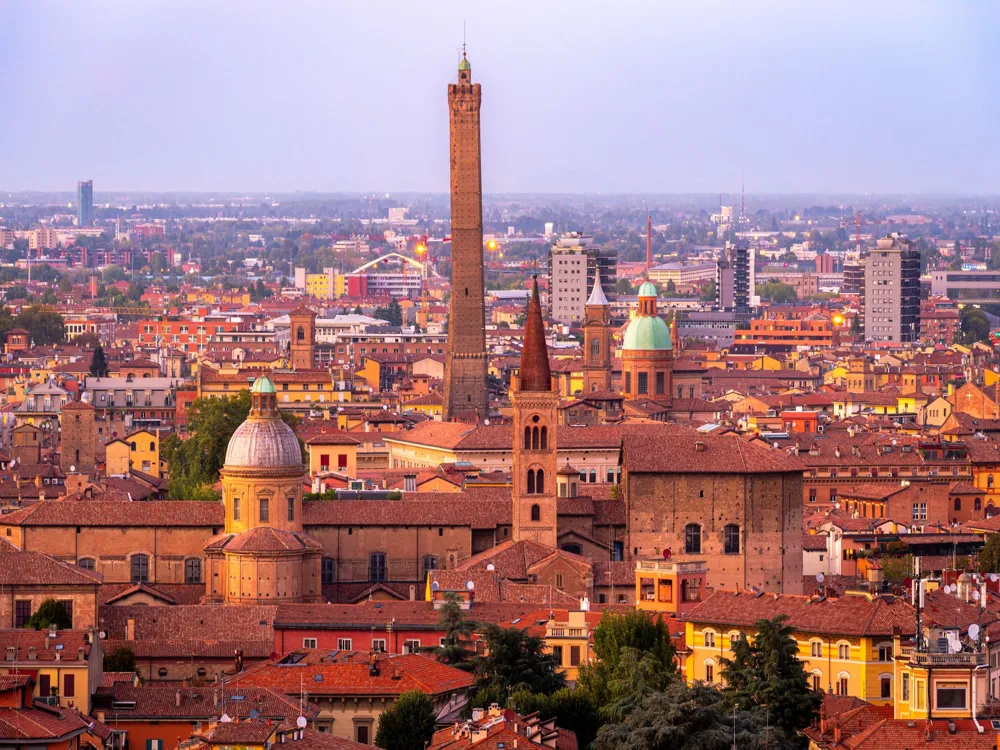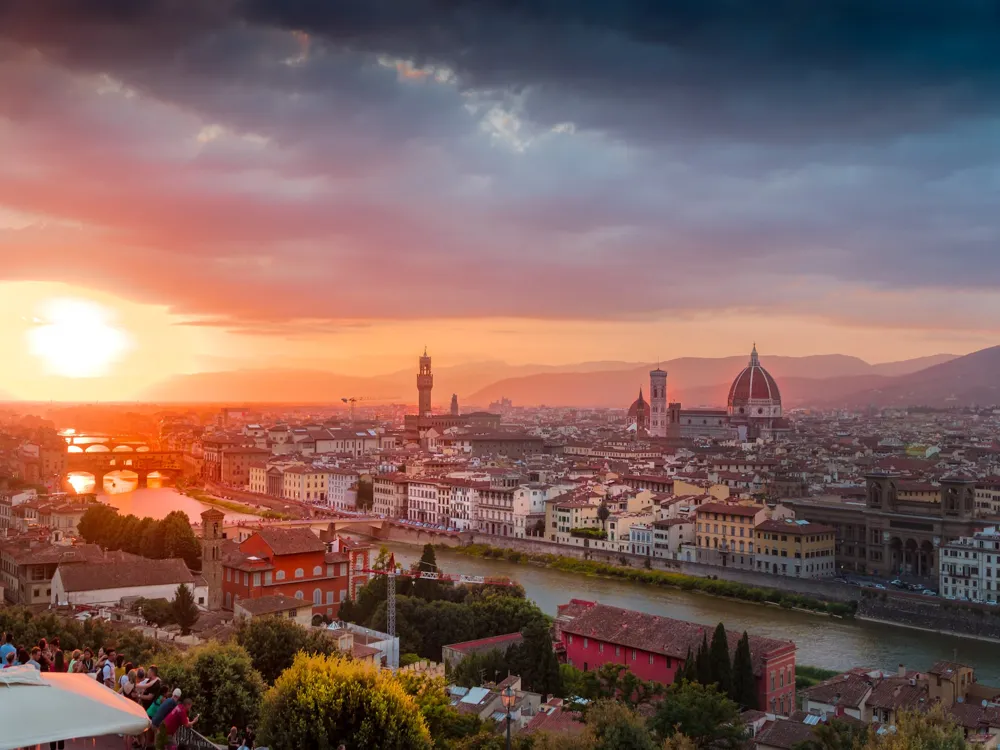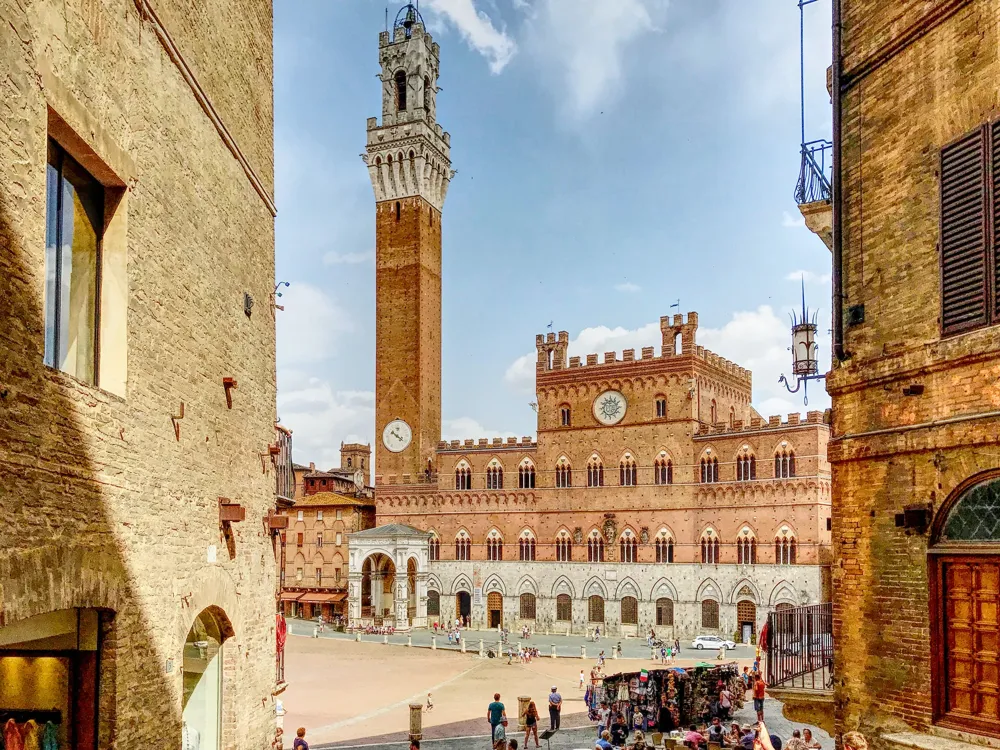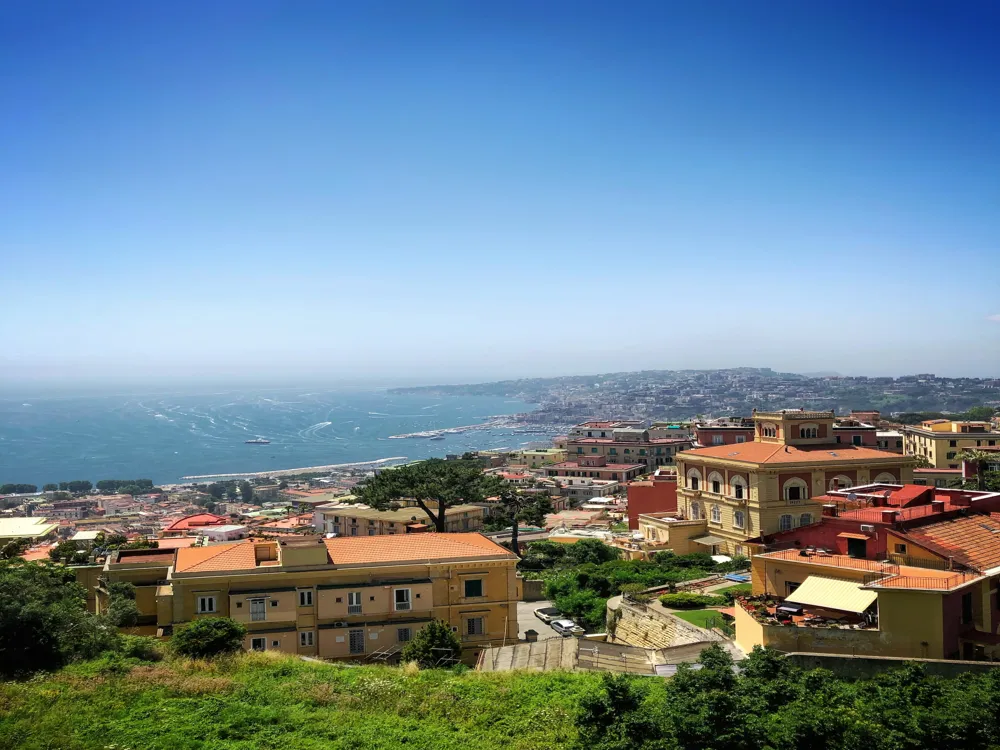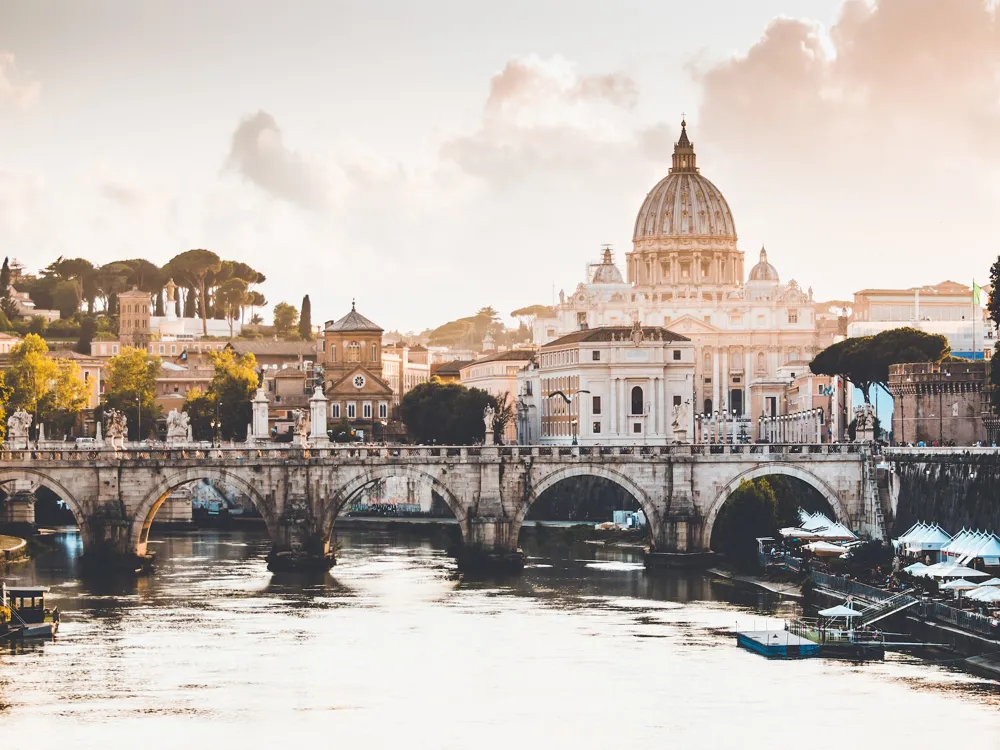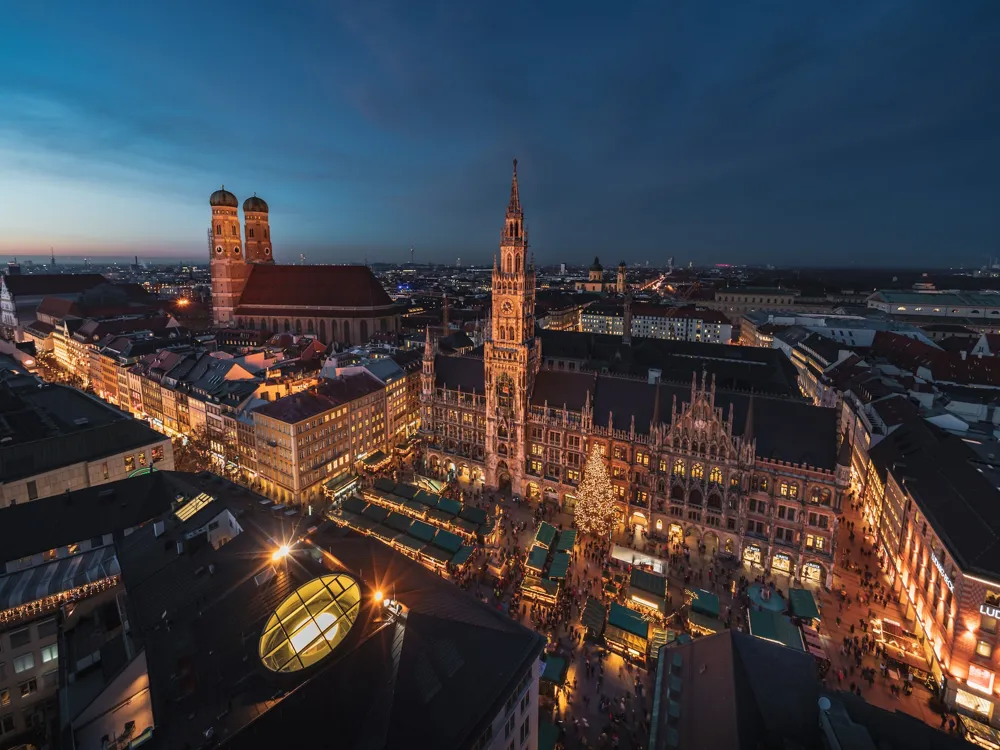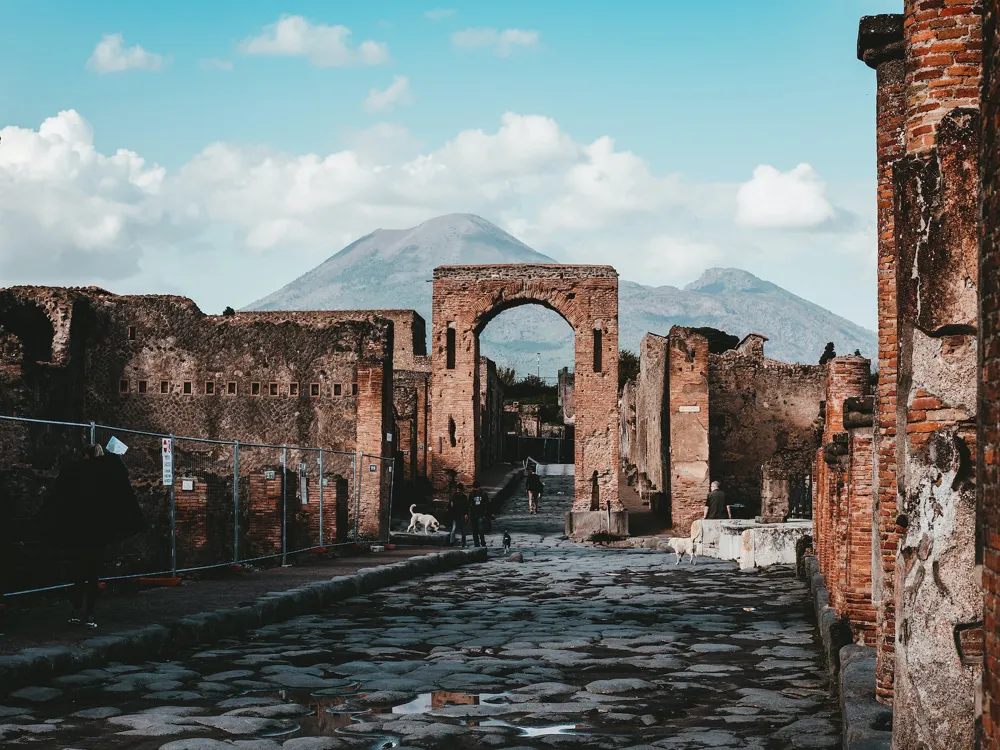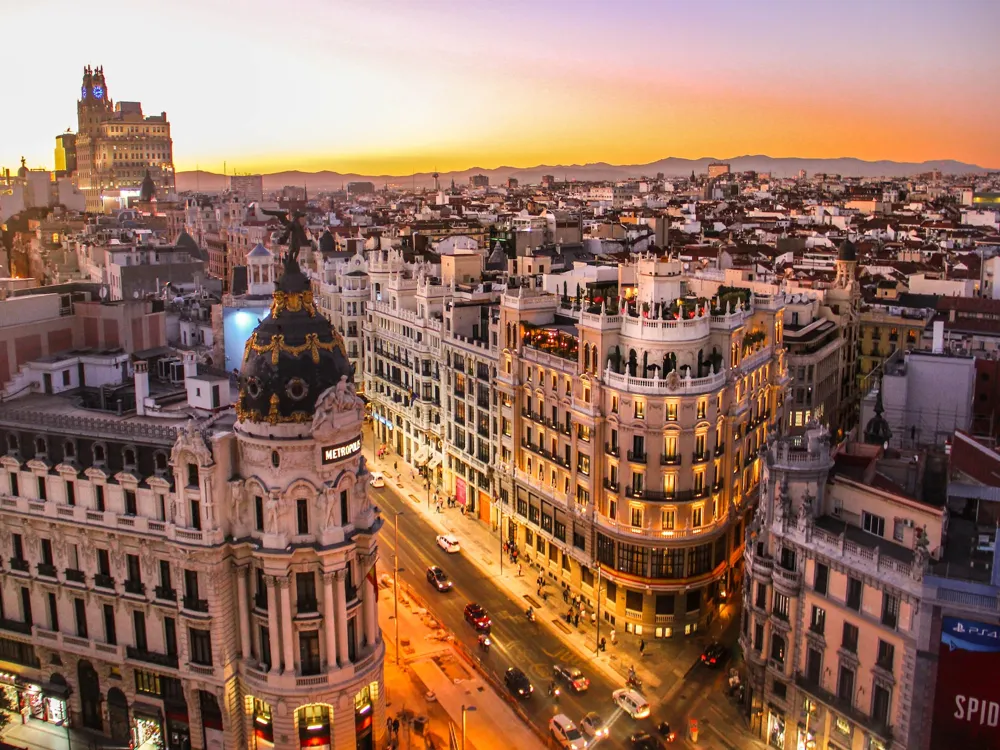Plan Your Travel To Bologna
Places To Visit In Bologna
Palazzo Fava
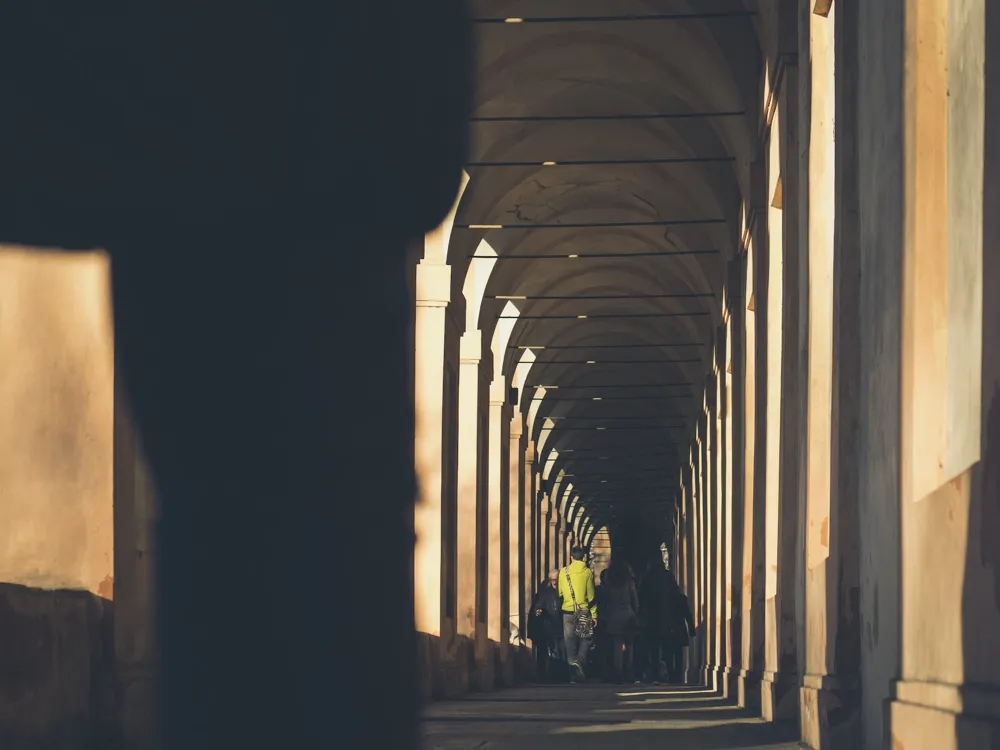
The Palazzo Fava is a palace museum located on the Via Manzoni in Bologna. This mansion regularly hosts temporary art exhibits such as Girl with a Pearl Earring (La Ragazza con l’orecchino di Perla) and From Cimabue to Morandi-Felsina Painter (Da Cimabue a Morandi-Felsina Pittrice).
The Sala di Giasone fresco is another popular feature of the palace. The palace rooms are heavily frescoes by Ludovico Carracci and his students. The famous Sala di Giasone was designed by brothers Annibale and Agostino and their cousin Ludovico Carracci.
Read More
Palazzo Pepoli Vecchio
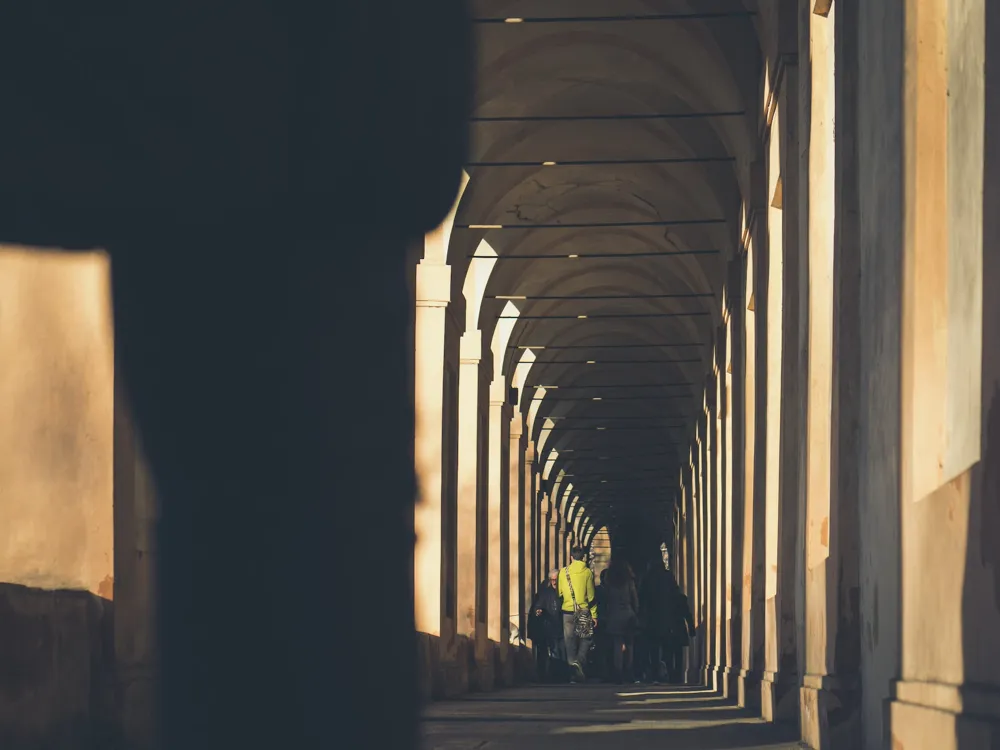
The Palazzo Pepoli Vecchio is home to the Historical Museum of Bologna on Via Castiglione. This museum of Bolognese history is sectioned into different phases, from the Etruscan Felsina to the present Bologna. The museum has a beautiful blue wireframed room with a simulated river.
The Pepoli family owned the palazzo until 1910. It was built by the Pepoli in 1344 with their protection in mind, so it looks like a fortress from the outside; the inside has a regal, palatial look. It was recently refurbished in 2012. All stages like the ancient period, the Medieval period, the Renaissance period and modern history have been well documented by artefacts and retold through multimedia experiences. There’s also a part dedicated to the religious, political and social life of the ancient Bolognese. If you visit, look at the large Renaissance map of Bologna from 1575 and the Forma Urbis Romae, which is a massive map of ancient Rome. There is a theatre inside the room where you can watch 3D historical films. Audio guides (included in the entry fee) are provided to the museum visitors.
Read More
Palazzo Poggi
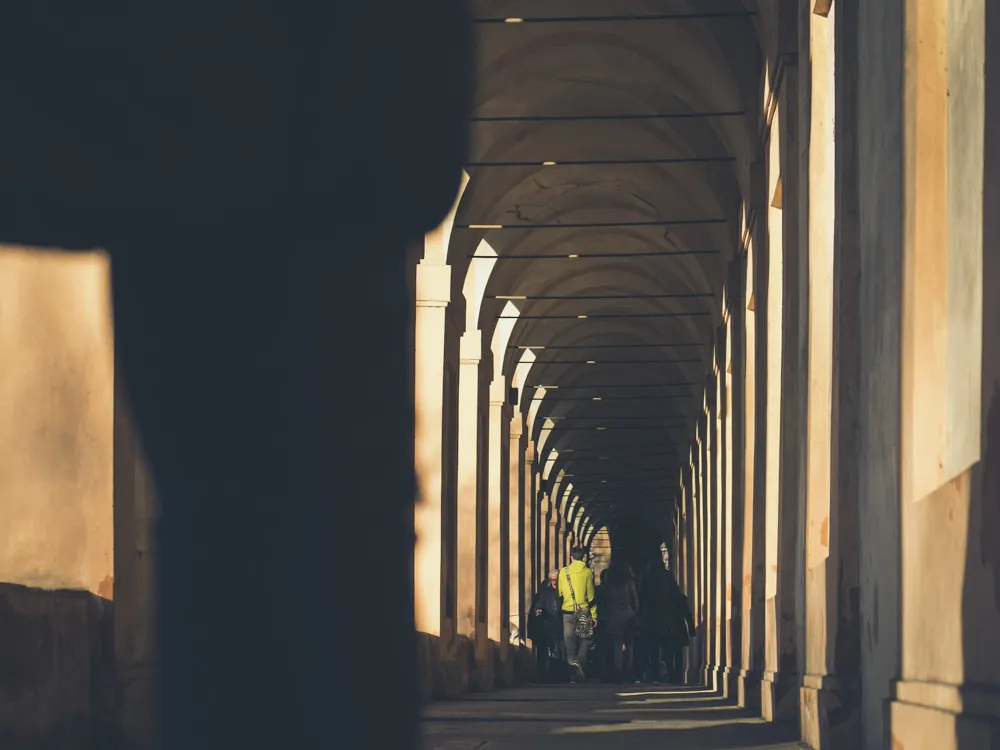
The Palazzo Poggi is a palace housing different scientific museum chambers in Bologna. The museum of ships and ancient geographical maps includes naval models and geographical maps from the 17th and 18th centuries from the Institute of Sciences. The views from Its tower are amazing.
The military architecture museum is dedicated to military equipment and fortification designs. Wax models and surgical equipment are displayed in a chamber dedicated to human anatomy and obstetrics. The natural history museum, physics museum, and specola museum are also part of the museum complex. Designed by Pellegrino Tibaldi, Palazzo Poggi was built in 1549. The astronomical observatory 300 steps on top of the palace, the Torre della Specola e Museo Astronomico was built in 1725. Numerous astrological instruments can be found here, as well as an impressive map of Chinese constellations made on rice paper from the 17th century. The 18th-century electrostatic generator by Ramsden in the physics museum is a delightful contraption. The palace is a superb place to enrich your knowledge and satiate your curiosities.
Read More
Porticos Bologna
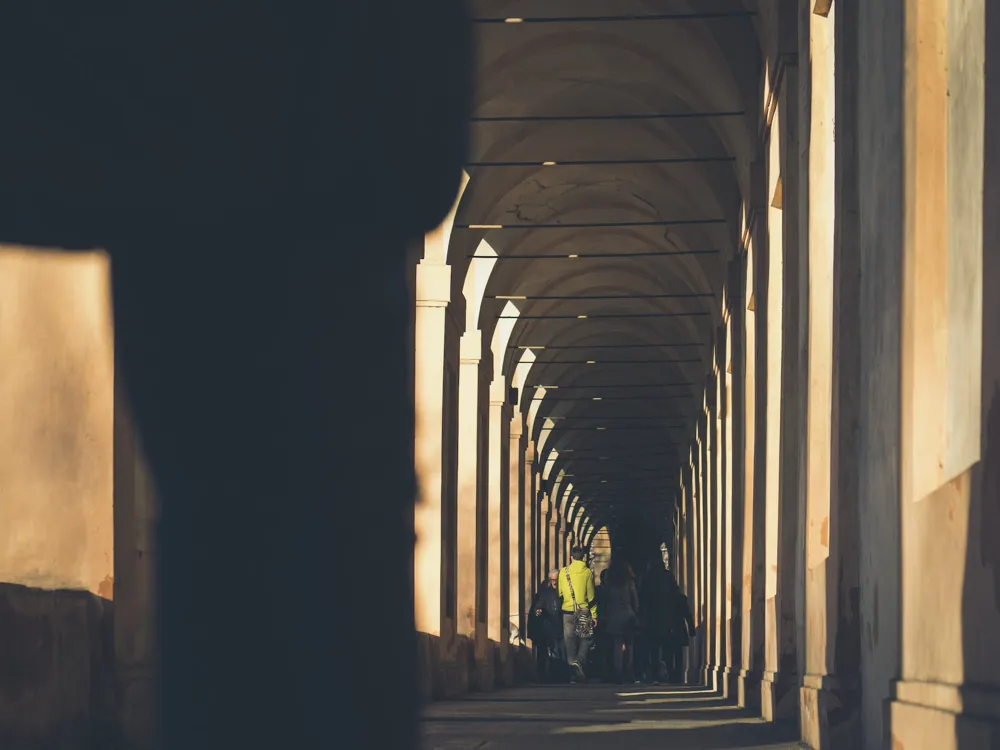
A portico is like a walkway with a roof-like structure outside a building and is centred at the building's entrance. The city of Bologna is known for its porticos, which have been declared "World Heritage Sites" by UNESCO. They stretch a total distance of 62km, with 40km in the city's historic centre.
Each portico is unique in its design; here's a list of some must-see porticoes along with what makes them special:
Portico di San Luca—Longest portico and offers spectacular views
Portico at Palazzo della Banca d’Italia—Decorated with impressive frescoes.
Portico at Teatro Comunale—You can hear musical rehearsals as it lies outside an Opera Theatre.
Portico del Pavaglione—Lined with high-end stores, you can window shop to your heart's content.
Read More
Quadrilatero
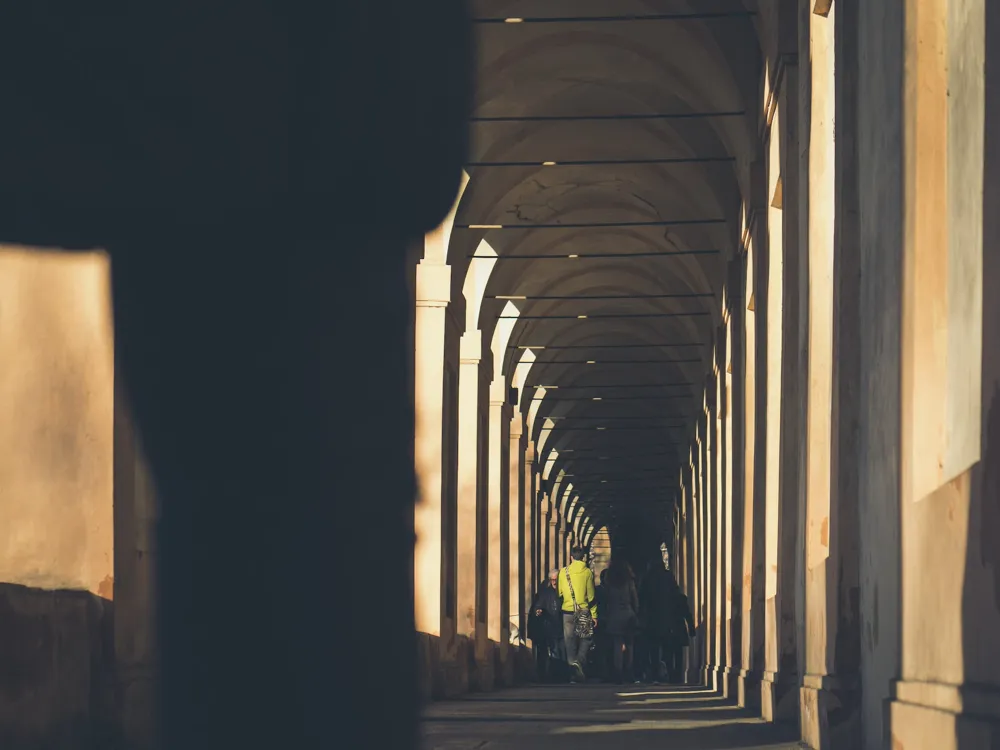
The Quadrilatero is an old market area with the best street food in Italy, with Bolognese delicacies like tortellini, Tagliatelle al Ragù, Green Lasagna, and fresh loaves of bread. You will also find fishmongers, cheese stalls, and fresh local meat shops. You can enjoy an aperitivo at one of the wine bars here.
Its name is derived from the word quadrilateral, meaning a four-sided area. The area of Bologna had its most significant development during the Middle Ages and hasn’t changed much since. As you walk through the cobblestone streets, the sights are similar to what a person from the 15th century would have seen. The only factor distinguishing the present-day area from Medieval times is the presence of modern luxury Italian and international brands such as Borbonese and Diesel (and the prices). You can also buy fresh fruits and vegetables here. Many goldsmith and jewellery shops are still set up from ages ago.
Read More
Santa Maria della Vita

The Church of Santa Maria Della Vita is in Quadrilatero, Bologna's heart. This baroque church flaunts the famous Compianto del Cristo Morto sculpture by Niccolò dell'Arca. In Oratorio dei Battuta, you will see another fantastic terracotta scuplture by Alfonso Lombardi—Il Transito della Vergine.
The oratory is embellished with intricate frescoes. The Lamentation over the Dead Christ features six figures gathered around a dead Christ. What makes it impressive is the meticulous detail in the expressions of pain and sorrow in the sculptures. The rest of the church is beautifully decorated with paintings, colourful marble and statues.
Read More
Sanctuary of the Madonna di San Luca
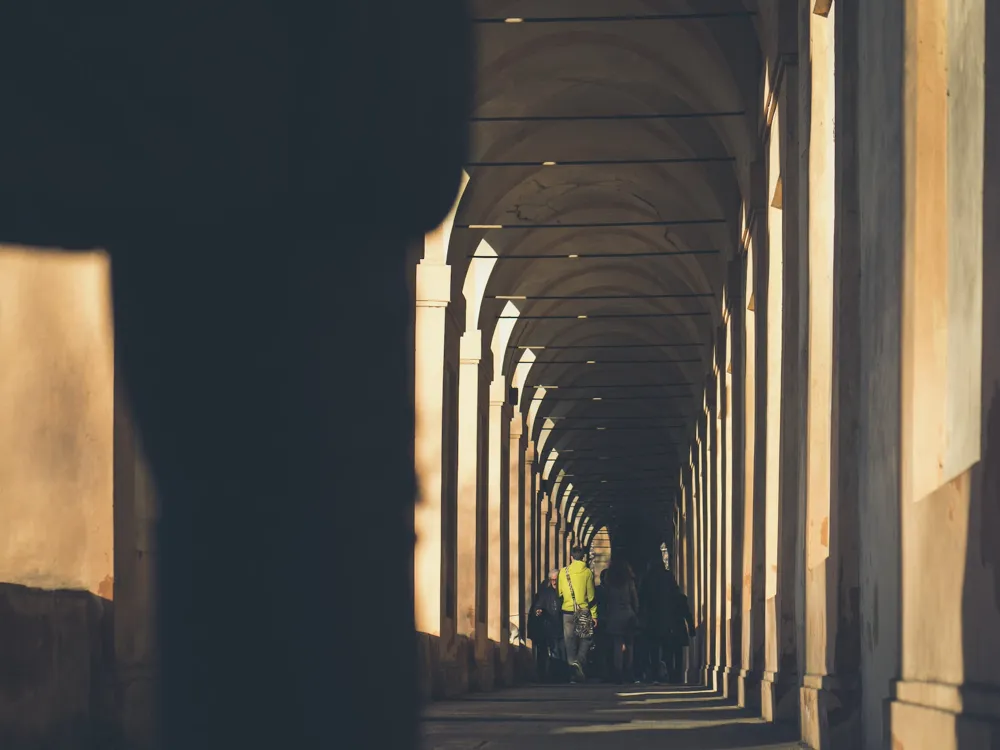
The Sanctuary of Madonna di San Luca is a sanctuary and basilica atop a hill in Bologna. It has a simple but unique curved structure. The observation deck at the top offers a splendid panoramic city view. The inside is decorated with frescoes by Vittorio Bigari.
This imposing building becomes visible as soon as you enter the city. Paintings by Bologna’s famous Guido Reni and other artists like Donato Creti and Giuseppe Mazza can be seen inside.A church has existed here for thousands of years. Carlo Francesco Dotti designed the present-day monument in 1723. It was declared a World Heritage Site by UNESCO in 2021. A black representation of the Virgin Mary is present in the basilica, purportedly painted by Saint Luke and brought to Bologna from the Byzantine Empire in the 12th century. The walk up to this basilica, under the Portica di San Luca, is 3.3 km long and worth the distance for the pleasant views. You can also take a bus if you don’t feel like walking so much. Once you reach the sanctuary, you can climb to the top for an additional fee, get some binoculars and be astounded by the delightful views, also known as the Sky Experience.
Read More
Bologna Travel Packages
View All Travel Packages Bologna
Nearby Places Bologna
Browse Package Collections
Browse Hotel Collections








